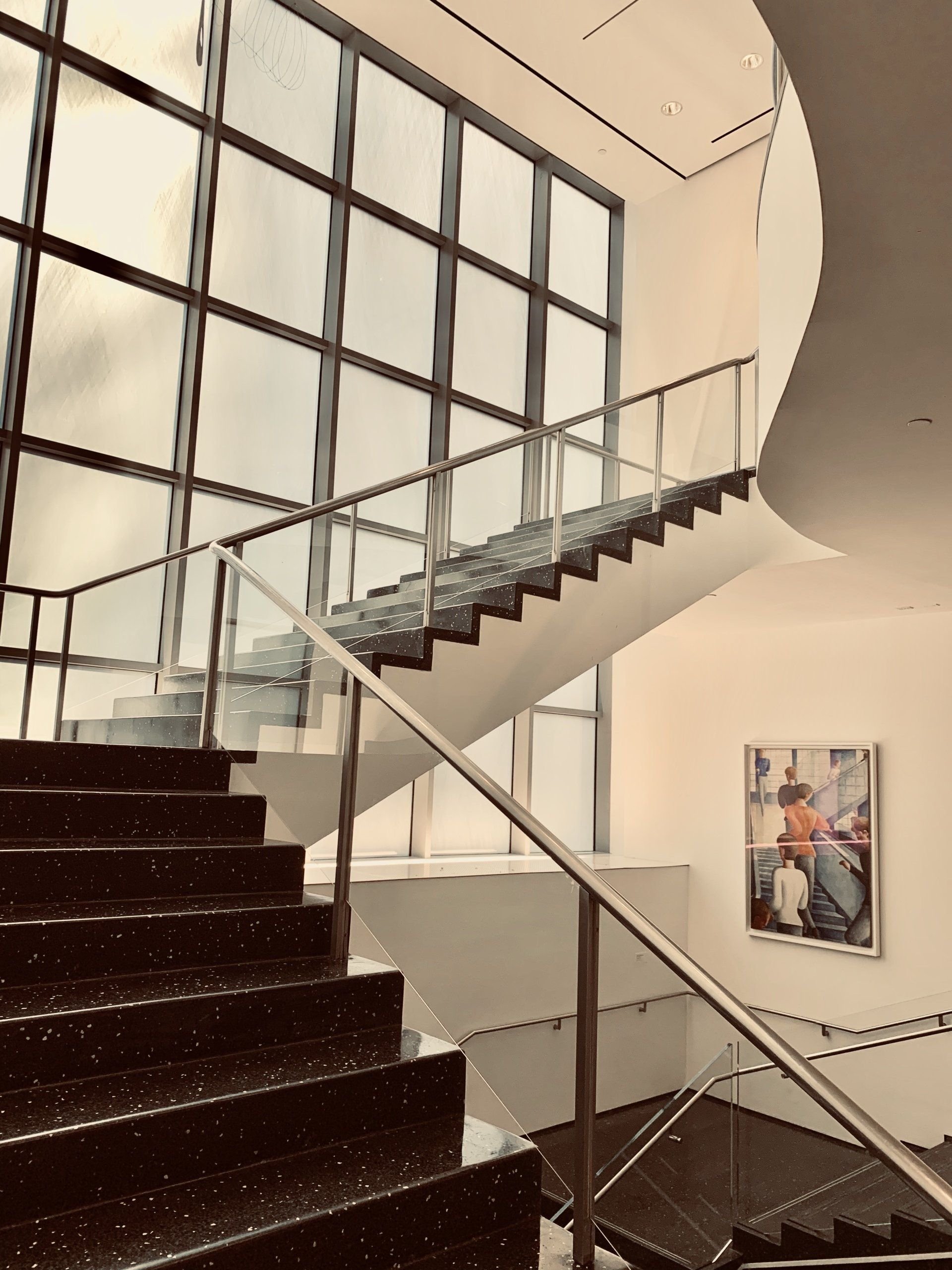The MoMA renovation
I started going to the Museum of Modern Art in NY when I was a teenager. Any trip to the city included a visit there. I loved building, the art, the garden. And yet, one of my most enduring memories was the “Bauhaus Staircase” which featured Oskar Schlemmer’s painting “Bauhaus Stairway (1932) on the landing. The painting shows students on the famous staircase in the Bauhaus building in Dessau, Germany, by Walter Gropius. And the stair at MoMA was inspired by that same stair. The staircase and the painting together created a powerful dialogue that reinforced the impact that the Bauhaus had on the museum’s modernist aesthetic.
From the museum’s opening in 1932 until the 1983 expansion added mall like escalators, this staircase was the primary access to the painting galleries, so this experience was tied to every visit. Then it seemed to vanish once the escalators provided the means for vertical transportation. I remember looking for and finding the stair on a visit, and it seemed forlorn and forgotten. I hated those escalators as much for what they did to the staircase as for their utilitarian blandness. The 2004 expansion and renovation by Taniguchi recreated the staircase, but moved the painting to one of the upper level galleries, no longer in the home that had given it so much impact.
It was of great interest to read that in the newest expansion and renovation by Diller, Scofio and Renfro, the original staircase had been restored and expanded to the ground floor, once again giving the stair pride of place and reuniting it with the painting. The stair is now one of the few remaining artifacts from the original Goodwin and Stone building, and is again a primary connection between gallery floors. So on my first trip to the re-opened museum, I looked forward to seeing the stair as much as the re-opened museum itself. It was like visiting old friends, the stair as well as iconic artworks that I hadn’t seen in years.

